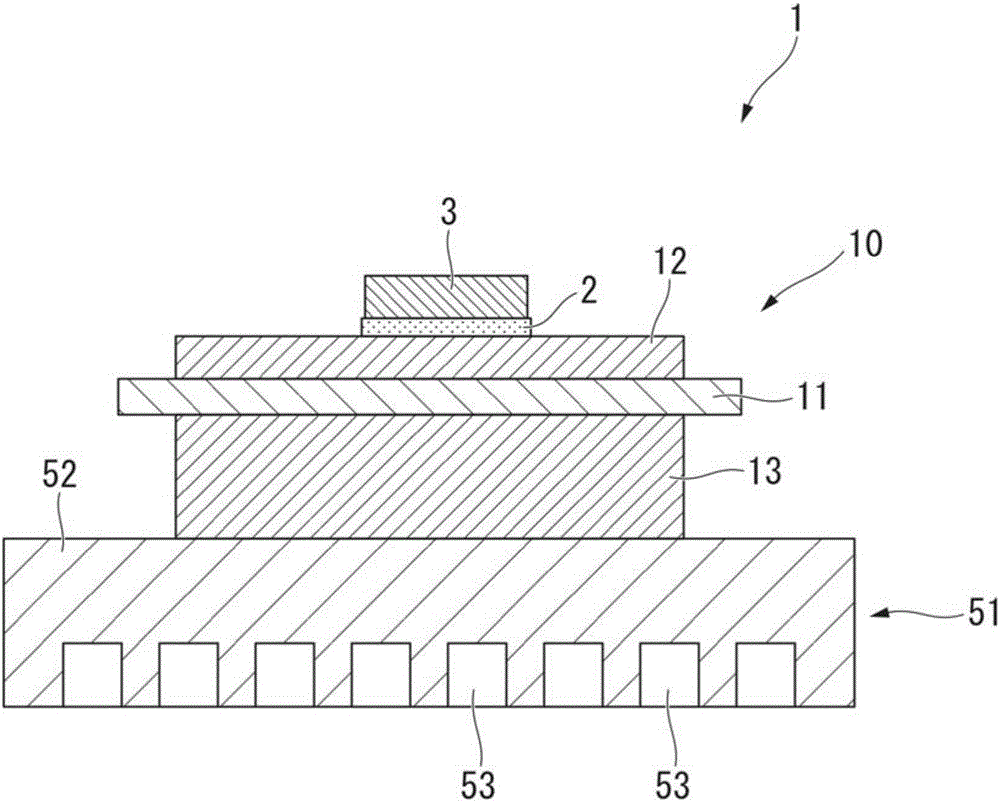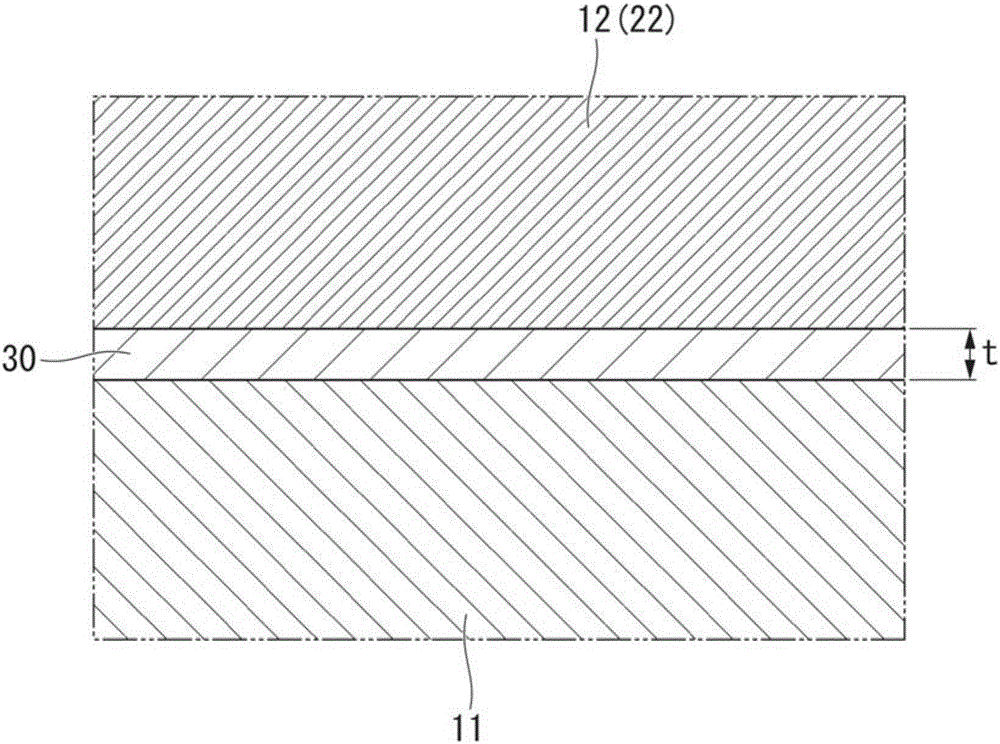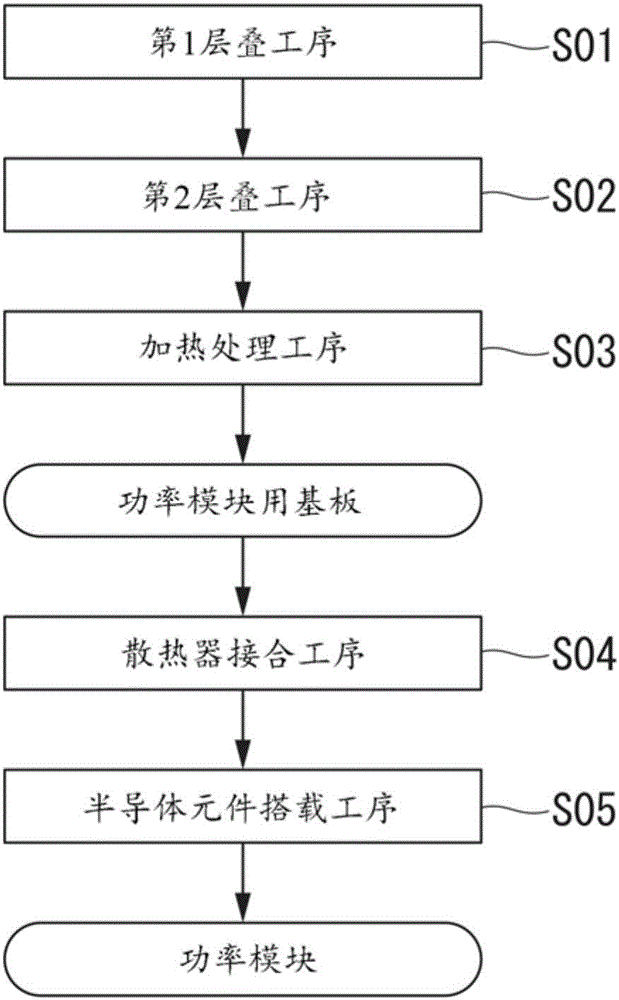Copper/ceramic bond and power module substrate
A technology of power modules and joints, which is applied in the manufacture of electric solid state devices, semiconductor devices, semiconductor/solid state devices, etc., and can solve problems such as cracking of ceramic substrates
- Summary
- Abstract
- Description
- Claims
- Application Information
AI Technical Summary
Problems solved by technology
Method used
Image
Examples
no. 1 approach
[0051] Hereinafter, a first embodiment according to a first aspect of the present invention will be described with reference to the drawings.
[0052] The copper-ceramic bonded body according to the first embodiment of the present invention is formed by joining the ceramic substrate 11 which is a ceramic part made of nitride ceramics and the copper plate 22 which is a copper part made of copper or a copper alloy (circuit The power module substrate 10 constituted by layer 12).
[0053] figure 1 A power module substrate 10 according to the first embodiment of the present invention and a power module 1 using the power module substrate 10 are shown in FIG.
[0054] The power module 1 includes a power module substrate 10, and is bonded to one side of the power module substrate 10 via a solder layer 2 ( figure 1 The semiconductor element 3 on the upper side) and the other side of the power module substrate 10 ( figure 1 The lower side of the middle) radiator 51.
[0055] Here, t...
no. 2 approach
[0092] Hereinafter, a second embodiment according to the first aspect of the present invention will be described with reference to the drawings.
[0093] The copper-ceramic bonded body according to the second embodiment of the present invention is configured by bonding the ceramic substrate 11 which is a ceramic component made of nitride ceramics and the ceramic substrate 11 made of copper or a copper alloy, as in the first embodiment. A power module substrate composed of a copper plate 22 (circuit layer 12) of copper components, figure 1 In the power module substrate shown, the structure of the bonding interface between the ceramic substrate 11 and the copper plate 22 (circuit layer 12 ) is different.
[0094] Figure 5 The structure of the bonding interface between the ceramic substrate 11 and the copper plate 22 (circuit layer 12 ) in the second embodiment of the present invention is shown in .
[0095] In the second embodiment, as Figure 5 As shown, the bonding interfa...
no. 3 approach
[0127] Hereinafter, a third embodiment according to the second aspect of the present invention will be described with reference to the drawings.
[0128] Components having the same configuration as those of the first embodiment are assigned the same reference numerals, and detailed description thereof will be omitted.
[0129] The copper-ceramic bonded body according to the third embodiment is formed by bonding a ceramic substrate 211 which is a ceramic member made of alumina and a copper plate 22 (circuit layer 12 ) which is a copper member made of copper or a copper alloy. A power module substrate 210 is formed.
[0130] Figure 8 A power module substrate 210 as a third embodiment of the present invention and a power module 201 using the power module substrate 210 are shown in FIG.
[0131] The power module 201 includes a power module substrate 210, and is bonded to one side of the power module substrate 210 via a solder layer 2 ( Figure 8 The semiconductor element 3 on ...
PUM
| Property | Measurement | Unit |
|---|---|---|
| thickness | aaaaa | aaaaa |
| thickness | aaaaa | aaaaa |
| thickness | aaaaa | aaaaa |
Abstract
Description
Claims
Application Information
 Login to View More
Login to View More - R&D
- Intellectual Property
- Life Sciences
- Materials
- Tech Scout
- Unparalleled Data Quality
- Higher Quality Content
- 60% Fewer Hallucinations
Browse by: Latest US Patents, China's latest patents, Technical Efficacy Thesaurus, Application Domain, Technology Topic, Popular Technical Reports.
© 2025 PatSnap. All rights reserved.Legal|Privacy policy|Modern Slavery Act Transparency Statement|Sitemap|About US| Contact US: help@patsnap.com



